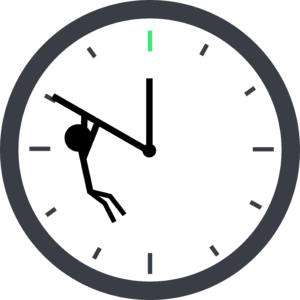
Blue Zones and Movement | Lessons from the World’s Longest-Lived People
Blue Zones—regions of the world where people consistently live longer, healthier lives—have captivated researchers and health enthusiasts alike. While diet and community are often highlighted as keys to their longevity, the role of natural, daily movement is equally vital. Unlike structured gym routines, Blue Zone populations incorporate physical activity seamlessly into their everyday lives, promoting health and vitality through functional fitness.
In this guide, we’ll explore the movement habits of Blue Zone populations, how these contribute to their remarkable longevity, and practical tips for incorporating these principles into your own life.
What Are Blue Zones?
Blue Zones are regions identified by researchers as having a high concentration of centenarians—individuals who live to 100 years or more. These regions include:
- Okinawa, Japan: Known for their "ikigai" (sense of purpose) and active lifestyles, Okinawans remain physically engaged through gardening, walking, and community activities.
- Sardinia, Italy: Sardinians often work on steep terrain and walk extensively, contributing to strong muscles and cardiovascular health.
- Nicoya, Costa Rica: Residents perform manual tasks and remain active through farming and other daily activities.
- Ikaria, Greece: Movement is part of daily life, with activities like walking, farming, and traditional dancing contributing to health and happiness.
- Loma Linda, California: The Adventist community here integrates walking, gardening, and other forms of gentle activity into their faith-based routines.
Movement Habits in Blue Zones
Unlike many modern fitness routines, movement in Blue Zones is natural, low-intensity, and deeply ingrained in daily life. Here are some key habits:
- Walking as a Daily Routine
-
- Walking is a common activity across all Blue Zones, used for transportation, socialising, and leisure.
- Gardening and Manual Tasks
-
- Gardening provides gentle, sustained physical activity while connecting individuals with nature and their food.
- Functional Fitness
-
- Everyday tasks like climbing stairs, carrying groceries, and cooking keep muscles active and joints flexible.
- Social and Community Activities
-
- Movement often happens in a communal setting, such as group walks, traditional dancing, or helping neighbours, fostering both physical and social health.
How Movement Supports Longevity
The movement habits of Blue Zone populations offer numerous health benefits, including:
- Cardiovascular Health
-
- Regular, low-intensity activity like walking or gardening improves heart health and circulation.
- Muscle Maintenance
-
- Frequent use of muscles through natural movements prevents age-related muscle loss (sarcopenia) and maintains strength and mobility.
- Mental Wellbeing
-
- Movement reduces stress, boosts mood, and enhances mental clarity, contributing to overall emotional health.
- Social Connection
-
- Engaging in communal activities strengthens relationships, which have been shown to extend lifespan and improve quality of life.
- Stress Reduction
-
- Natural movement is often meditative and stress-relieving, helping regulate cortisol levels and support hormonal balance.
Incorporating Blue Zone Movement into Your Life
You don’t have to live in a Blue Zone to benefit from their movement habits. Here are practical ways to incorporate these principles:
- Walk More Often
-
- Take short walks throughout the day, whether it’s to run errands, visit a friend, or simply enjoy nature.
- Start Gardening
-
- Plant a small garden or tend to houseplants to engage in physical activity while connecting with nature.
- Use Stairs Instead of Elevators
-
- Opt for stairs whenever possible to integrate functional fitness into your daily routine.
- Reduce Sedentary Time
-
- Stand while talking on the phone, stretch during TV commercials, or set reminders to move every hour if you sit for long periods.
- Engage in Social Activities
-
- Join walking groups, participate in community events, or take a dance class to combine movement with social interaction.
- Embrace Hobbies That Require Movement
-
- Activities like cooking, woodworking, or cycling keep you active while pursuing something you enjoy.
Debunking Myths About Longevity and Exercise
Let’s address a few misconceptions about movement and longevity:
- Myth: Only Intense Workouts Are Effective
Low-intensity, consistent activity is just as beneficial, if not more so, for long-term health and longevity. - Myth: You Need a Gym Membership
Blue Zone movement habits show that natural, everyday activities can replace structured workouts. - Myth: Modern Lifestyles Can’t Replicate Blue Zones
By making small, intentional changes, anyone can adopt Blue Zone-inspired movement habits in their daily life.
Your Path to Natural Movement and Longevity Starts Here
The movement habits of Blue Zone populations offer valuable lessons for anyone looking to live a longer, healthier life. By integrating natural, low-intensity activities into your routine, you can improve your physical health, reduce stress, and foster meaningful connections—key ingredients for a fulfilling and vibrant life.
At Slowing the Clock, we’re here to guide you with practical advice and inspiration from the world’s longest-lived communities. Explore our website for more tips on fitness, lifestyle habits, and strategies to enhance your health and longevity.